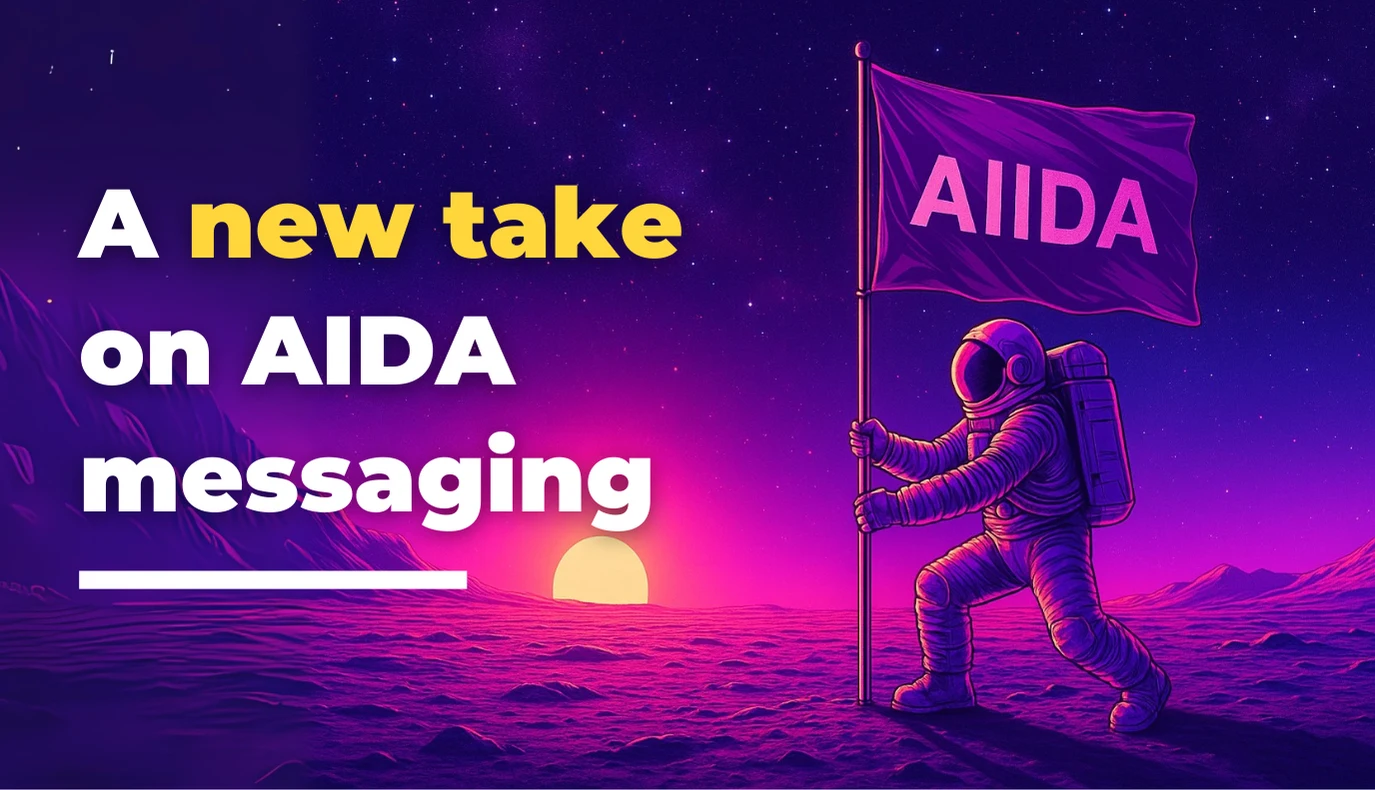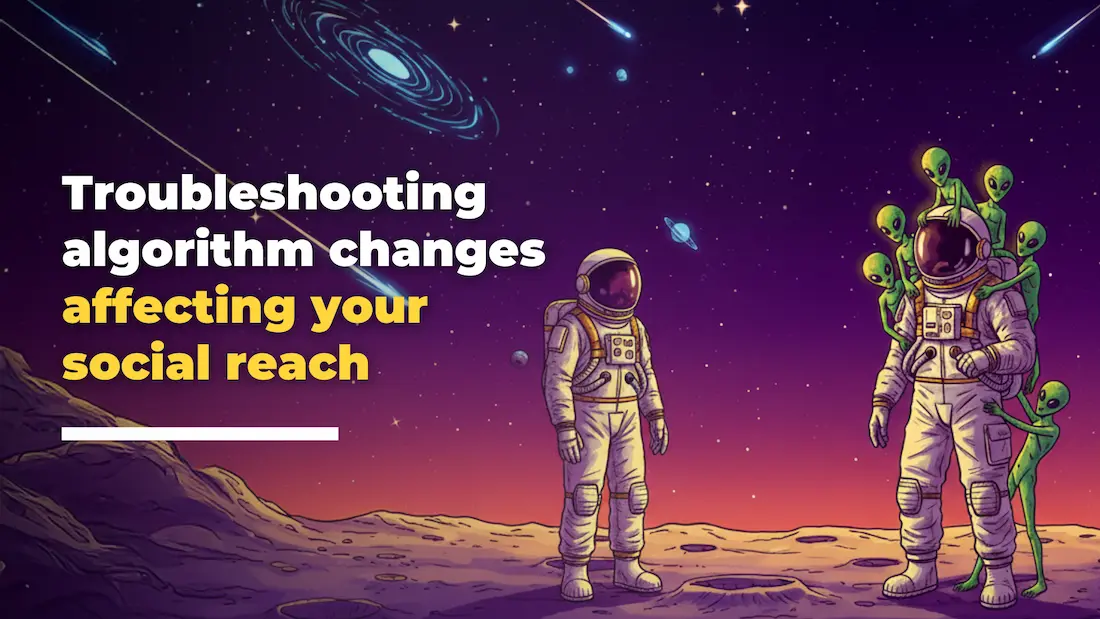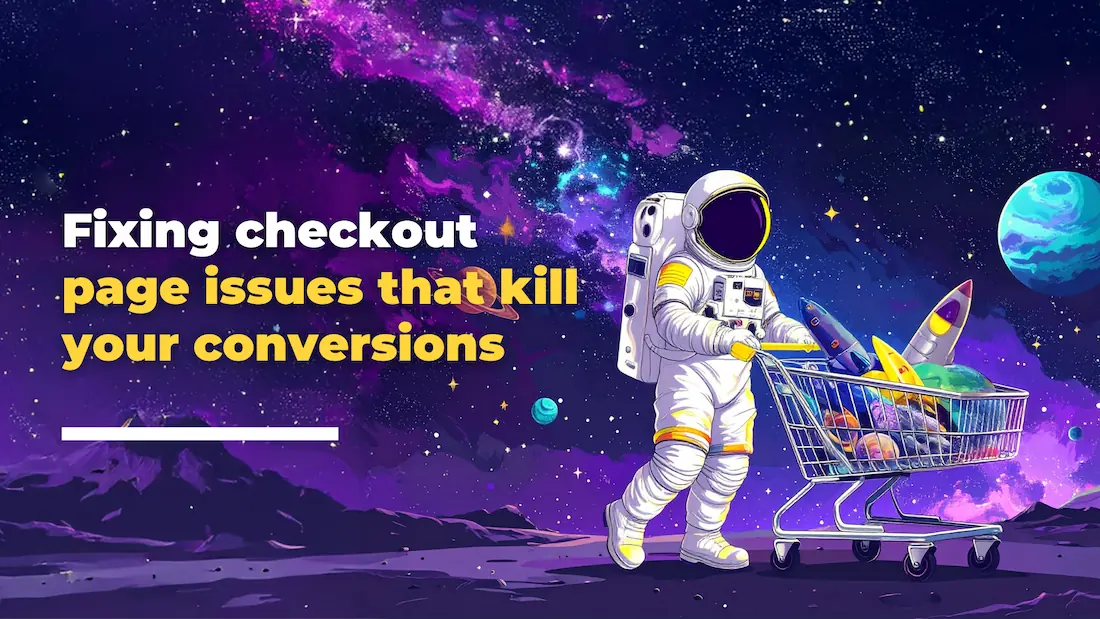For over a century, marketers and communicators have relied on a trusted framework to guide their efforts: the AIDA messaging framework. Its elegant simplicity – Attention, Interest, Desire, Action – has provided a roadmap for crafting messages that move audiences. But in a digital world where every consumer is an empowered researcher, is AIDA still enough?
The foundational principles of AIDA remain as relevant as ever, but the buyer’s journey has fundamentally changed. The path from awareness to purchase is no longer a straight line. It’s a dynamic, user-driven process that includes a crucial, often-overlooked phase. This reality calls for an evolution of our classic model, adapting it for the modern, information-rich landscape.
It’s time to move beyond AIDA and embrace a more comprehensive framework: AIIDA, with the pivotal new step of Investigation.
The Timeless Power of AIDA
Before we build upon the model, it’s important to respect its enduring foundation. The AIDA framework, developed in the late 19th century, brilliantly maps the cognitive stages a person experiences when encountering a marketing message.
- Attention: In a world saturated with information, the first and most difficult step is simply getting noticed. This is the hook—a compelling headline, a striking visual, an unexpected question—that stops someone in their tracks.
- Interest: Once you have their attention, you must hold it. This phase is about providing relevant information that resonates with the audience’s needs and piques their curiosity, encouraging them to engage further.
- Desire: This is the critical shift from logical interest to emotional want. It’s where you connect the features of your product or service to the deeper aspirations and needs of your audience, making your offer feel indispensable.
- Action: Finally, you must guide your audience to take a specific, tangible step, whether that’s making a purchase, downloading a resource, or starting a free trial.
This model’s longevity is a testament to its accuracy in describing the human decision-making process. However, the rise of digital technology has introduced a new layer of complexity that requires a modernized approach.
Introducing AIIDA: A Framework for the Modern Buyer
Today’s consumers are not passive recipients of advertising. They are active investigators. With unlimited access to information, they don’t just take a brand’s word for it; they verify it. This is why the AIIDA model integrates “Investigation” as a distinct and crucial stage in the communication process.
Attention: Earning the First Click
In the modern marketing arena, attention is the currency. Your audience is constantly bombarded with content, making it incredibly difficult to stand out. To capture their attention, your message must be sharp, relevant, and immediately signal value.
This means leading with a headline that speaks directly to a known pain point or a powerful aspiration. For a B2B software company targeting project managers, a title like “The 5 metrics your business should be tracking but isn’t” is far more compelling than a simple product announcement. For a consumer brand in the wellness space, an opening like “Tired of waking up tired? The solution may not be what you think.” connects instantly with a deeply felt need.
Effective attention-grabbing is about empathy. It requires a profound understanding of your audience’s world and the ability to articulate their challenges even better than they can.
Interest: Transforming a Click into Engagement
Once you’ve earned that initial moment of attention, the clock is ticking. You must quickly convert that fleeting curiosity into sustained interest. This is where you deliver on the promise of your headline with valuable, educational, and engaging content.
This is not the time for a hard sell. It’s the time to build rapport and establish credibility. If your headline promised a solution to task juggling, the content should offer a new perspective on workflow management or practical tips for improving team collaboration. If you promised more restful nights, provide insights into sleep science or actionable advice on creating a better bedtime routine.
By delivering genuine value upfront, you shift the dynamic from a one-way advertisement to a two-way conversation, positioning your brand as a helpful and knowledgeable resource.
Investigation: Empowering the Empowered Consumer
This is the game-changing addition to the classic model and the new reality for every marketer. Once a potential customer is interested, their immediate next step is to open a new browser tab and start researching. They are now in the Investigation phase.
They actively seek out third-party validation, compare alternatives, and look for proof that you can deliver on your claims. Their search queries become more specific:
- “[Your Brand] reviews”
- “[Your Brand] vs. [Competitor Brand]”
- “How [Your Brand] works”
Your marketing strategy must anticipate and support this investigative phase. If you don’t provide the answers, your competitors will. To succeed here, you need to create a rich ecosystem of trust-building assets, including:
- In-depth Case Studies: Go beyond simple success stories. Detail the client’s problem, your strategic solution, and the measurable results you achieved.
- Authentic Testimonials and Reviews: Showcase genuine feedback from real customers across various platforms.
- Transparent Process Pages: Clearly explain how your service works or how your product is made. This demystifies your offering and builds confidence.
- Comparison Guides: Create fair and honest comparisons between your product and others on the market. This positions you as a confident industry expert and keeps the research on your website.
By embracing the investigation phase, you meet your customers where they are, provide them with the information they need, and build the deep-seated trust that is essential for any modern business relationship.
Desire: Building an Emotional Bridge
With a foundation of trust established through the investigation phase, you can now focus on transforming rational interest into emotional desire. This is where you connect the dots between the features of your product and the powerful outcomes your customer wants to achieve.
It’s about painting a vivid picture of the “after” state. For the project manager, desire isn’t just about a more organized dashboard; it’s about the feeling of being in control of the chaos, the recognition from leadership for delivering projects on time, and the relief of leaving work at a reasonable hour. For the wellness customer, desire isn’t just about a new mattress; it’s about waking up energized, feeling more present with their family, and unlocking their full potential.
This is the heart of effective marketing: connecting your solution to the fundamental human drivers of your audience.
Action: Paving a Clear Path Forward
After building a compelling case through every stage of the AIIDA model, the final step is to make taking action as easy and intuitive as possible. All the momentum you’ve created can be lost if your call to action (CTA) is weak, confusing, or hidden.
A strong CTA is:
- Clear and Specific: It uses action-oriented language and tells the user exactly what will happen next (e.g., “Start Your Free 30-Day Trial,” “Download the Complete Guide,” “Schedule Your Free Consultation”).
- Compelling: It reinforces the value proposition and reduces perceived risk (e.g., “Join 10,000+ Thriving Businesses Today”).
- Low-Friction: It minimizes the number of steps required to complete the action.
By designing a clear and persuasive final step, you honour the entire journey the customer has taken with you and make it simple for them to take the next logical step in building a relationship with your brand.
The digital marketplace has empowered consumers and, in doing so, has made the marketer’s job more complex. The linear path of AIDA is no longer sufficient. By adopting the AIIDA model, you acknowledge and embrace the reality of the modern buyer’s journey. You create a more resilient, effective, and customer-centric marketing strategy that doesn’t just broadcast a message but builds the trust and confidence needed to turn attention into lasting action.
Go get that ROI, fellow business owners!
~ Jeremy Whittingstall, BA, MA, ABC





